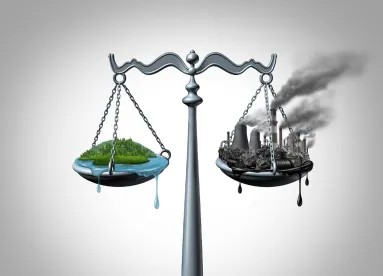For most of my time on this planet, and all of my more than thirty years as an environmental lawyer, the nation's highest court has, with very few exceptions, blessed the United States Environmental Protection Agency's broad interpretations of the environmental protection statutes it, through the President, has been authorized by Congress to implement.
Indeed, in more than a few cases, the Supreme Court interpreted a federal environmental protection statute more broadly than EPA. One of those cases was Massachusetts v. EPA. In that case the Supreme Court ruled against EPA in holding that the Clean Air Act authorizes EPA to regulate greenhouse gas emissions.
That era ended today for sure.
Today, in West Virginia v. EPA, the Supreme Court agreed that "[c]apping carbon dioxide emissions at a level that will force a nationwide transition away from the use of coal to generate electricity may be a sensible 'solution to the crisis of the day,'" but the decision to do that rests with Congress, and only with Congress.
That means that from here on out EPA can use its existing Clean Air Act authority only to limit emissions from power generating facilities, not to require transitions to renewable sources of power. Again, no one thinks that is sufficient to avoid the climate catastrophe that is at our door.
It is worth emphasizing that the Supreme Court could have avoided tying EPA's hands. EPA has already announced it isn't implementing the Obama era regulation that was challenged. But six Justices of the Supreme Court were sufficiently concerned that EPA was going to again step outside what they saw as EPA's lane that they chose to act.
There is no way that one can reasonably suggest this would have happened twenty years ago, or even two years ago when the Supreme Court interpreted the Clean Water Act to apply more broadly than EPA asserted at the time.
But we have entered a new era with a new rule decreed today by the Chief Justice writing for six Justices of the Supreme Court. That rule comes from a twenty three year old article in the Cardozo Law School Review (and, concurring Justice Gorsuch adds, from the Constitution and the Federalist Papers). It is that "[a]gencies have only those powers given to them by Congress, and 'enabling legislation' is generally not an open book to which the agency [may] add pages and change the plot line.”
For years the Executive and Judicial Branches have developed what they thought were "sensible solutions" to our nation's environmental challenges, including attempting to mitigate the catastrophe of carbon-fueled climate change, in the face of the nearly total disfunction of the Legislative Branch. As they say, nature (not to mention the environment and human health) abhors a vacuum. Now it is up to Congress.
If that isn't enough discouraging news after the past few weeks as we head into the celebration of our nation's birth, the Supreme Court's next decision on a matter of environmental law will likely be its determination of the reach of the Clean Water Act in Sackett in the next term but I think it is already pretty clear what that decision will be.




 />i
/>i

